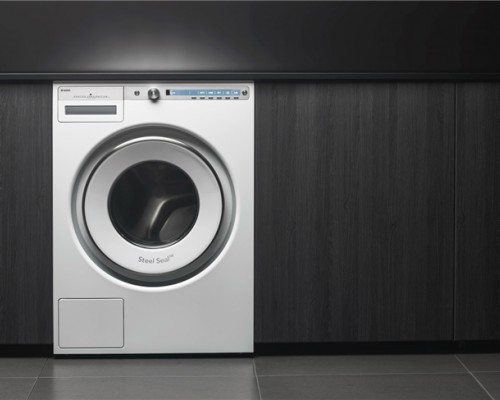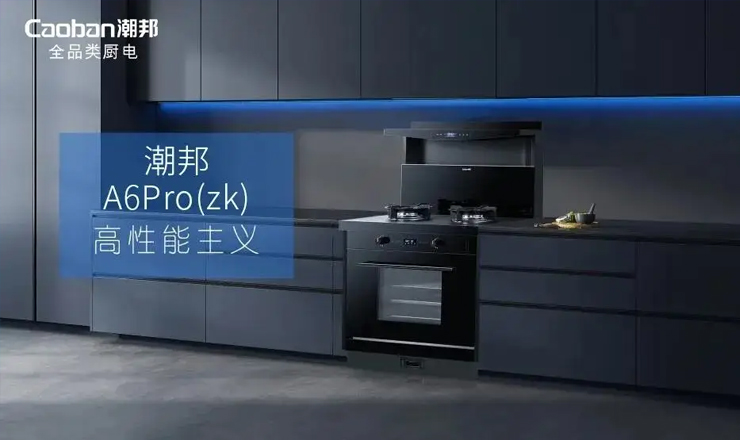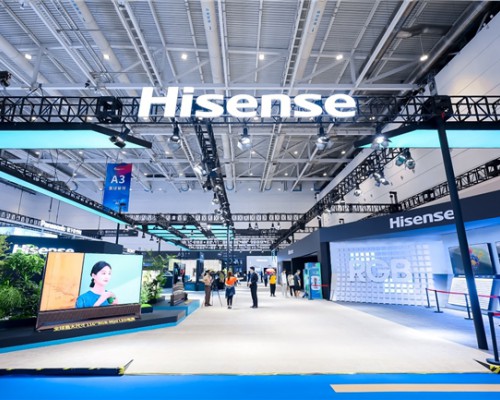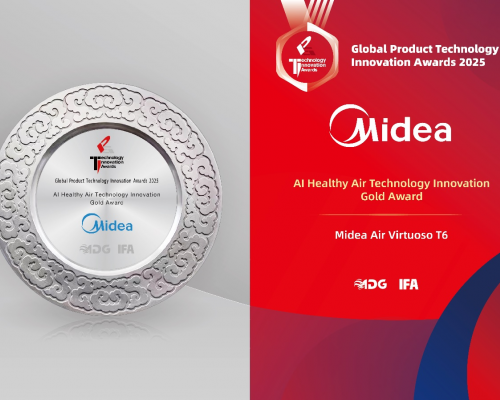2年后,5G手机 终端 设计将面临哪些挑战
YUAN+Yifei+and+WANG+Xinhui
This paper provides an overview of the physical layer of 5G new radio (NR) system. A general framework of 5G NR is first described, which glues together various key components, all of them helping to fulfill the requirements of three major deployment scenarios: enhanced mobile broadband (eMBB), ultra?reliable low latency communications (URLLC) and massive machine type communications (mMTC). Then, several key components of the 5G NR physical layer are discussed in more detail that include multiple access, channel coding, multiple antennas, frame structures, and initial access. The two?phase approach of NR is also discussed and the key technologies expected to be specified in Phase 1 and Phase 2 are listed.
5G; IMT?2020; new radio (NR)
1 Introduction
fter years of research on 5G by various promotion groups around the world, such as METIS, IMT?2020, and 5G Forum, 5G finally arrived in 3GPP, the most influential standard development body on cellular communications in the world. In September 2015, the first 5G workshop was held in Phoenix of USA, which marks the start of 5G in 3GPP. The channel model work for 5G was then started, suitable for spectrum bands up to 100 GHz. This is the foundation of technology study of 5G. At the same time, 3GPP kicked off the study on deployment scenarios for radio access network (RAN) and key performance indicators (KPIs) of 5G. This study provides the guidance on potential technologies that may fulfill the performance requirements and applications expected for 5G. In January 2016, the actual work on the 5G channel model was moved to 3GPP WG1 whose mission is to specify the physical layer features of 5G, LTE, and Universal Mobile Telecommunications System (UMTS)/high?speed packet access (HSPA) system. Significant progress was achieved over the three working group level meetings till March 2016 and a stochastic model was chosen as mandatory and a hybrid model as optional. Both the models were captured in the technical report for channel modeling [1]. By March 2016, most of the work on requirements [2] had been finished at the RAN level. The three most important deployment scenarios for the requirements were identified: enhanced mobile broadband (eMBB), ultra?reliable low latency communications (URLLC) and massive machine type communications (mMTC). Performance metrics were also agreed, which include peak data rates, user experienced throughput, cell average and edge spectral efficiency, control and user plane latency, reliability, connection density and efficiency, and etc. The actual numbers of KPIs for 5G are still in discussion in 3GPP.
In March 2016, a study item was approved by 3GPP to investigate the potential technologies for 5G new radio (NR) [3]. The reason of naming it “new radio” is that this air interface will not be backward compatible with any 4G standards such as LTE?Advanced?pro. This new radio interface can be deployed stand?alone, i.e., an independent network not relying on other networks. NR can also be deployed in non?stand?alone fashion, i.e., along with LTE?Advanced?pro, since LTE evolution is also considered part of 5G. At the physical layer, potential technical areas of NR include multiple access, waveform, channel coding, frame structure, multiple?input multiple?output (MIMO), device?to?device (D2D), vehicle?to?vehicle (V2V), unlicensed spectrum, etc. This study item (Phase 1) of NR will be finished by March 2017, followed by the work item stage (Phase 2). Phase 1 aims to specify basic functionalities of NR that can partially fulfill the performance requirements of 5G. Its specification work will be completed by June 2018 and this would make it possible to deploy the first 5G network by around 2020. It became clear that not all the technologies can be specified in Phase 1, because some of features are not considered as so urgent until 2020. The RAN plenary decided in September 2016 to postpone the specification of some technologies or deployment scenarios, such as D2D, V2V, carrier frequency over 40 GHz, unlicensed spectrum, and mMTC, so that the work groups of RAN and Services & System Aspects (SA) could focus on the specification of frame structure, channel coding, MIMO, etc. in Phase 1.
The rest of this paper is organized as follows. In section 2, we discuss the framework of NR physical layer. In section 3, key components of the NR physical layer are described. The phased approach of NR specification is discussed in Section 4. Some conclusions are drawn in Section 5.
2 Framework of NR Physical Layer
Technologies
NR is a new air interface that is not backward compatible with LTE, LTE?Advanced or LTE?Advanced?pro. NR networks can be independently deployed without relying on any 2G, 3G or 4G networks. This means that NR should have a complete set of RAN functionalities to be able to work alone. Similar to previous generations of cellular networks, NR should have basic frame structure, numerology, initial access procedures, and scheduling for operation. In some sense, these basic components for 5G NR system may inherit lots of design of previous generations, in particular 4G standards. It is apparent that multiple access schemes for NR would be at least based on orthogonal frequency division multiple access (OFDMA). Moreover, the fundamental waveform of NR is cyclic prefix?orthogonal frequency division modulation (CP?OFDM), while the frame structure and numerology would share some characteristics of LTE.
Innovations in areas of multiple access, channel coding and MIMO will play important roles in achieving 5G performance requirements. They serve as the main technical drivers to propel the work on basic functionalities listed above such as numerology, frame structures, initial access, and scheduling.
Fig. 1 shows the framework of NR physical layer technologies. To be more specific, new multiple access schemes such as those based on non?orthogonal properties would introduce a “scheduling?light” and/or “light initial access” mechanism to significantly reduce the control overhead and access latency in order to efficiently support mMTC.
New channel coding schemes such as low?density parity check (LDPC) and polar codes can significantly reduce the decoding complexity for scenarios with large block sizes and/or high coding rates, and improve the performance for those with short block sizes. It is known that the decoding of channel codes would consume a lot of processing power of a receiver. Codes with efficient decoding algorithms can shrink the timing budget for processing at the receiver. With these advancements, the frame structure can be made more “self?contained”. Fast decoding also facilitates the design and specification for URLLC. With the super?wide bandwidth expected for 5G, i.e., up to 1 GHz, channel codes efficient for large block sizes become an imperative, rather than an option. Without it, frame structure of NR would be merely a hollow place holder.
MIMO techniques help to differentiate NR from 4G in many aspects. NR would operate up to 100 GHz bands. At such high carrier frequency, MIMO or beamforming is a must?have feature. Otherwise, the severe path loss and penetration would render NR useless, even indoor. Hence, beamformed transmission would widely be employed, not only for traffic channels, but also for control signaling, random access signal, synchronization signal, and broadcast channels carrying system information. Beamforming is also used at the receiver. Because of these, initial access and frame structure of NR would have many footprint of beamforming, which is seldom seen in LTE.
3 Key Components of NR Physical Layer
3.1 Multiple Access and Waveform
Multiple access has become a landmark technology for each generation of cellular communications; 1G is frequency division multiple access (FDMA), 2G is time division multiple access (TDMA), 3G is code division multiple access (CDMA), and 4G is OFDMA. The extensive study so far has shown that OFDMA can deliver reasonably high system throughput for eMBB both for downlink and uplink. It is also well recognized that orthogonal transmission in general requires less sophisticated receivers. Therefore, OFDMA is mandatory at least for eMBB. On the other hand, non?orthogonal multiple access will be an important complementary feature to further enhance the system throughput for eMBB services in NR, similar to multi?user superposition transmission (MUST) feature for LTE.
A more important use of non?orthogonal transmission in NR is mMTC uplink. 5G should support up to 1 million devices per square kilometer. With such dense connections, the system has to handle huge volume of users data simultaneously. This puts significant constrain on control signaling where using traditional grant?based transmission becomes highly inefficient, simply due to the excessive overhead of signaling. To solve this issue, grant?free transmission is proposed where no explicit dynamic grant is signaled to terminal devices. Non?orthogonal multiple access is often grant?free so that multiple devices can share resources at the same time and frequency. Grant?free non?orthogonal multiple access also reduces the latency. As illustrated in Fig. 2, a device can immediately start the transmission when it has data to send, without the need to wait until the full?blown random access is completed, nor limited to radio?resource?control (RRC)?connected state only. For mMTC services that are characterized by small packets of infrequent arrivals, significant power saving is expected at the terminal devices.
Grant?free transmission is autonomous and contention?based. Different users can use different signatures to facilitate the detection and decoding at the receiver. One option would be that each device randomly selects the signatures, resulting in certain signature collisions. The other option would be that the signatures of users are pre?defined. Multiple access signatures can be sequence, code, interleaver pattern, demodulation reference signal, preamble, etc. They can roughly be categorized as follows:
1) Type 1 signatures: short codes and sequences that have more structures
·Type 1a: short codes and sequences that have low cross correlation or better inter?distance property
·Type 1b: short codes and sequences that have low density property
2) Type 2: long codes, sequences, or interleaver patterns that have less structure
Here, long or short is of relative sense. In general, if a code or sequence length is much less than the code block length, it is considered as “short”. The low cross correlation property of Type 1a signatures facilitates the successive interference cancellation (SIC) at the receiver. The low density property of Type 1b signatures helps to reduce the receiver complexity of message passing algorithm (MPA), a type of parallel interference cancellation (PIC) scheme. In 3GPP, so far about 15 grant?free schemes have been proposed. Each of them uses one or two types of signatures listed above. For example, Multi?User Shared Access (MUSA) [4] and Non?Orthogonal Coded Access(NOCA) [5] use Type 1a, Sparse Code Multiple Access (SCMA) and Pattern Defined Multiple Access (PDMA) [5] use Type 1b, and Resource Spread Multiple Access (RSMA) and Interleave Division Multiple Access (IDMA) [5] use Type 2.
Several waveforms have been proposed, such as windowed?OFDM (W?OFDM), filtered?OFDM (F?OFDM), filter?bank?OFDM (FB?OFDM), and universal OFDM (UFDM). These waveforms are able to make the spectrum more localized, i.e., less out?of?band emission, which is important to the scenarios where different numerologies are frequency division multiplexed (FDM). An extensive simulation campaign has been done, and it was decided that the study on NR waveform was to be moved to 3GPP WG4 whose mission is to set the radio frequency requirements. The rationale is that all the above mentioned waveforms are based on CP?OFDM and the receiver do not need to know the exact filtering process at the transmitter. To improve the link budget, discrete?Fourier?transform?spread OFDM (DFT?S?OFDM) is also supported for uplink with single?stream transmission, at <40 GHz.
3.2 Channel Coding and Modulation
In NR, four major types of channel coding are being studied: low density parity check (LDPC) codes, turbo codes, polar codes, and tail?biting convolutional codes (TBCC). LDPC was originally proposed by Gallager in early 1960s [6]. After experiencing over 30 years of obscurity, its potential performance and uniqueness of parallel decoding process were re?discovered by the channel coding society in late 1990s. LDPC was adopted as the optional feature in IEEE standards. However, it lost the battle to turbo codes for the channel codes of LTE, mainly because that the block size and code rate were not high enough for LDPC to be mandatory. The situation in NR becomes more favorable to LDPC: the code block size can be greater than 10,000 and the code rate can reach 8/9, so that the advantage of parallel processing of LDPC is more pronounced. Since the adoption in IEEE standards, quite a lot of studies have been carried out to make LDPC more flexible to different block sizes and to more efficiently support hybrid automatic repeat request (HARQ). There have been many implementations of LDPC in WiMAX and proprietary microwave backhaul from which plenty of experience has been accumulated in the hardware and firmware development. In another word, LDPC has been tested and now reaches certain a level of maturity in the wireless industry. Main stream LDPC schemes have the quasi?cyclic structure outlined in Fig. 3. Basically, all the low density parity check matrices (H) are derived from the proto?matrix (Hb), by the process of either “lifting”, or “shortening”. Lifting process helps to construct different block sizes of LDPC. Permutation matrix (P) is used during the “lifting”. “Shortening” process can tune the LDPC to different code rate. The HARQ can be achieved by fetching the system bits and parity bits from circular buffer. In November RAN1 meeting of 2016, LDPC was chosen as the channel code for eMBB data channel.
Turbo codes have been widely used in 3G and 4G standards, due to their good performance and flexibility to different block sizes. Apparently turbo codes are the most mature of all the four types mentioned above. However, the core of turbo decoding is the extrinsic information exchange between the two constituent soft?input and soft?out decoders [7]. Each runs maximum a posterior (MAP) based BCJR algorithm that is fundamentally a serial process. While windowing operation can be employed at the decoder to improve the decoders throughput, it comes at the cost of performance degradation and hardware complexity. This issue becomes a show?stopper when the code block size reaches 6000 and the code rate is higher than 2/3 where turbo codes can no longer compete against LDPC. Certain enhancement of LTE turbo has been proposed, e.g., to extend the quadratic permutation polynomials (QPP) to around 8000. However, above that, turbo is still inferior to LDPC. Another enhancement of LTE turbo includes mother code rate < 1/3, for example, 1/5 turbo, so that the performance can be improved at low SNR operating points.
The polar code was first proposed by Erdal Arikan in 2009 [8]. The advent of polar code is seminal in the sense that it is the first channel code that constructively builds and reaches channel capacity. The original channel is binary symmetric channel (BSC) which can be considered as the simplest form of “polarized channel”. This “polarization” would be extended to more sophisticated channels, so that channels are categorized into “good” channels and “bad” channels. Good channels have the maximal capacity and can carry the information bits, while bad channels have the least capacity and can carry the known bits. The basic decoding algorithm of polar is successive cancellation (SC) which is fundamentally serial. To improve the performance, list decoding is normally needed whose decoding complexity linearly increases with the list size (L). L can be 4, 8, 16 or 32. The polar code is relatively new and the most of study to date has still been in academia. Limited implementation has been conducted for polar. Nevertheless, the polar code show better performance than turbo and LDPC for short block sizes. In November RAN1 meeting of 2016, the polar code was chosen as the channel code for eMBB control channel, except for very short length.
Convolutional codes have been used for over 60 years. Normally, tail bits are reserved to bring the trellis state back to zero. In tail?biting convolutional codes (TBCC), the tail bits are saved to reduce the overhead, with a little more processing at the decoder. Even with maximal likelihood (ML) decoding such as Viterbi algorithm, the decoder of TBCC is the simplest among the four major channel codes. Due to the weak code structure, the performance of TBCC is the worst when the block size becomes larger, i.e., > 100 bits. Hence, TBCC is suitable for control channels, or small packets, low latency and low cost scenarios. Recently, list?decoding was proposed to improve the TBCCs performance by utilizing CRC bits, although the corresponding decoding complexity could be increased.
Conventional Quadrature Phase?Shift Keying (QPSK) and Quadrature Amplitude Modulation (QAM) constellation (with Gray mapping property) will be used for NR. Other low?Peak to Average Power Ratio (PAPR) modulation schemes are to be studied.
3.3 MIMO Technologies
MIMO in NR has to work for high frequency where beamforming would be widely used to compensate for the adverse propagation environment like severe path loss over the air and more attenuation when penetrating the building. Beamforming becomes more feasible for high frequency due to the shorter wavelength, and therefore the size of antenna array can be kept small even with a large number of elements. At high frequency, a high sampling rate and various imperfections at RF makes digital processing more expensive. Analog beamforming is more cost?effective. On the other hand, digital beamforming is preferred at low frequency bands due to its flexibility of resource scheduling and better performance. Hence, unified design is preferred so that common architecture is used for both low frequency bands (< 6 GHz) and high frequency bands (> 6 GHz), so that the systems can adaptively support analog/hybrid/digital beamforming, as well as the dynamic switching between various transmission schemes.
Similar to coordinated multi?point processing (CoMP) in LTE, group?based transmit/receive (Tx/Rx) beam selection can be considered where multiple links for MIMO is supported in flexible manner. It would follow a semi?transparent architecture.
Reference signaling and control signaling can be made more flexible. For example, multi?level or multi?shot designs are potential features. More specifically, in LTE, quite a number of transmission modes were introduced to individually optimize the MIMO performance for each deployment scenario. The switching between those transmission modes is semi?static and cannot dynamically adapt to the changing environment. In NR, it is preferred to allow dynamic adaptation of transmission schemes. The experience from LTE MIMO study and specification has proved that channel state information (CSI) feedback is vital for MIMO to deliver its promised throughput gain. One of the reasons that multiple transmission modes are defined in LTE MIMO is the challenging task of accurate CSI feedback. Advanced CSI framework is currently considered to solve this issue. For instance, the aperiodic reference signal is to be triggered for channel measurement and interference measurement, only when needed. The feedback CSI is based on linear combination of selected beams. Orthogonal basis based beam selection can be considered when both quantized amplitude and phase coefficients are used to combine the selected beam. CSI would be fed back in multiple levels, as illustrated in Fig. 4.
3.4 Numerology, Frame Structures, HARQ and Duplex
CP?OFDM would be the fundamental waveform for NR. Hence, the LTE numerology can largely be reused. In August 2016, it was decided that the reference numerology of NR is LTE, i.e., 14 OFDM symbols in 1 ms subframe (SF), 15 kHz for each subcarrier and 12 subcarriers in a physical resource block (PRB). The scaling of subcarrier spacing is to the power of 2, for example, 3.75 kHz, 7.5 kHz, 30 kHz, 60 kHz. Consequently, the symbol duration is shrunk to 1/2, and 1/4 of reference symbol duration. Subframe duration is fixed to 1 ms, and symbol level alignment should be enforced, in the case of same overhead of cyclic prefix. The symbol structures of 3.75 kHz, 7.5 kHz, 15 kHz, 30 kHz and 60 kHz for normal CP family are shown in Fig. 5.
It is observed in the cases of 30 kHz and 60 kHz that other than the first OFDM symbol, all the other OFDM symbols within 0.5 ms have the same size.
NR faces the issue of how to multiplex different numerologies. To reduce the complexity and resource fragmentation, nested structure is adopted which can be applied to the cases where physical resource blocks (PRBs) of different numerology are multiplexed in TDM or FDM (Fig. 6).
The frame structure of NR should give the networks more flexibility in scheduling, regardless of frequency division duplex (FDD) or time division duplex (TDD) spectrum bands. In fact, the design principle of NR frame structure would be general for FDD and TDD. This is quite different from the case of LTE where seven subframe configurations are defined for LTE?TDD, leading to very complicated HARQ timing. In particular, the all downlink or all uplink subframes of LTE?TDD cause longer round?trip time for HARQ and severely degrade the user experience. In NR, self?contained subframe structure becomes the prevailing view. This is also made possible because of the fast growing processing power of terminal devices. As illustrated in Fig. 7, 1 ms subframe can contain downlink control at the beginning of a subframe, followed by downlink data. This arrangement would give more time budget for the terminal receiver to decode the data, and be able to provide the feedback within this subframe. Reference signal for demodulation can be placed at the beginning of this subframe to facilitate in?time channel estimation. After the gap for Tx/Rx switching, the last symbol can be used for uplink control channel. Note that the structure in Fig. 7 represents the normal coverage situation where downlink and/or uplink control channel can be carried in partial subframe (i.e., one or several OFDM symbols). If the scenario is coverage limited, the entire 1 ms subframe can be used for uplink control, or OFDM symbols of multiple subframes are used for downlink control.
Due to self?contained frame structure, HARQ timing becomes more flexible. For instance, for downlink, NR supports both same?slot scheduling and cross?slot scheduling. The timing relationship between downlink (DL) data and the corresponding acknowledgement in uplink (UL) can be dynamically or semi?statically indicated. Uplink supports asynchronous HARQ. The timing offset between the UL assignment and the corresponding UL data can also be dynamically or semi?statically indicated.
Another key principle of frame structure is to minimize the resource allocation for common channel. Here, it is more reflected as the control channel and reference signals are dedicated to each user. Control channel does not need to span over the entire system bandwidth, and can occupy one or several sub?bands.
3.5 Initial Access and Mobility
Generally speaking, initial access and mobility support of different generations of cellular communications would share many common functions such as synchronization, system information broadcasting, and random access. Nevertheless, initial access of NR has its own characteristics, for example, extensive use of beamforming for common channels, super wide bandwidth for initial cell searching, minimum usage of resource for common channels, and introduction of a new RRC state.
For high frequency bands, analog beamforming would be more often used. Due to the limited number of transmit and receive unit (TXRU), signals may have to be transmitted or received along only one beam direction in one sweeping block (SB). Fig. 8a shows an example of uplink SB determination when Tx/Rx reciprocity is available. The base station (transmit/receive point, TRP) can indicate to the UE in the system information that there is a one?to?one mapping between sweeping blocks in DL sweeping time interval (STI) and UL STI. The UE should send physical random access channel (PRACH) preamble in the UL SB corresponding to the DL SB in which the best or acceptable signal strength is detected.
If the Tx/Rx reciprocity at the TRP is not reliable and TRP Rx beam sweeping is needed, the TRP can request the UE (e.g. in SI) to repeat the preamble transmission on multiple UL SBs, as seen in Fig. 8b. When Tx/Rx reciprocity is not available at UE, the UE can send preambles with different UE Tx beam directions in different UL SBs and/or in different UL STIs, as seen in Fig. 8c.
The super wide system bandwidth means that multiple numerologies may coexist in FDM fashion. Ideally for numerology, one synchronization signal would be defined. However, this may lead to excessive overhead. Right now, RAN1 is striving for minimizing the number of subcarrier spacings for synchronization signals and primary broadcast channels.
4 Phased Approach for NR
4.1 Technologies and Scopes for NR Phase 1
Apart from the basic frame structure, numerology and initial access to be defined for a network to be operable, NR phase 1 should also specify a few other key technologies that hopefully help to fulfill some KPIs of 5G. They are:
·Channel coding scheme for eMBB and URLLC
·MIMO techniques
·Beam management for initial access
·HARQ and scheduling.
It is noted that the links in consideration are primarily between the base station and the UE. The frequency bands are licensed bands and up to 40 GHz.
4.2 Technologies and Scope for NR Phase 2
Technologies and the scope in Phase 2 will extend the use cases of 5G and help to fulfill all KPIs of 5G. They are:
·Waveform above 40 GHz
·mMTC
·Flexible duplex of FDD
·Interworking with non?3GPP systems
·Wireless relay
·Satellite communications
·Air?to?ground and light air craft communications
·Extreme long distance coverage
·Sidelink
·Vehicle?to?Vehicle (V2V) and Vehicle?to?X (V2X)
·Multimedia broadcast/multicast service
·Shared spectrum and unlicensed spectrum
·Location/positioning functionality
·Public warning/emergency alert
·New self?organized network (SON) functionality
·2?step RACH process
·Uplink based mobility
·Analog CSI feedback and explicit CSI feedback for MIMO.
5 Conclusions
In this paper we provided an overview of new radio (NR) physical layer for 5G, which is currently in the study phase in 3GPP. This survey starts from the framework of NR physical layer, followed by more detailed description of each key technology and functionality. The items to be specified in Phase 1 and Phase 2 are also listed.







